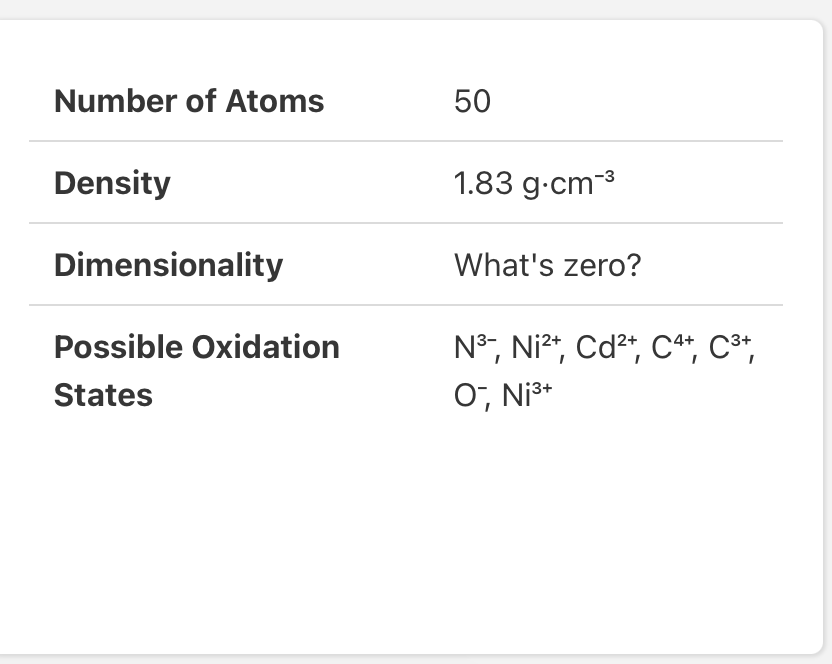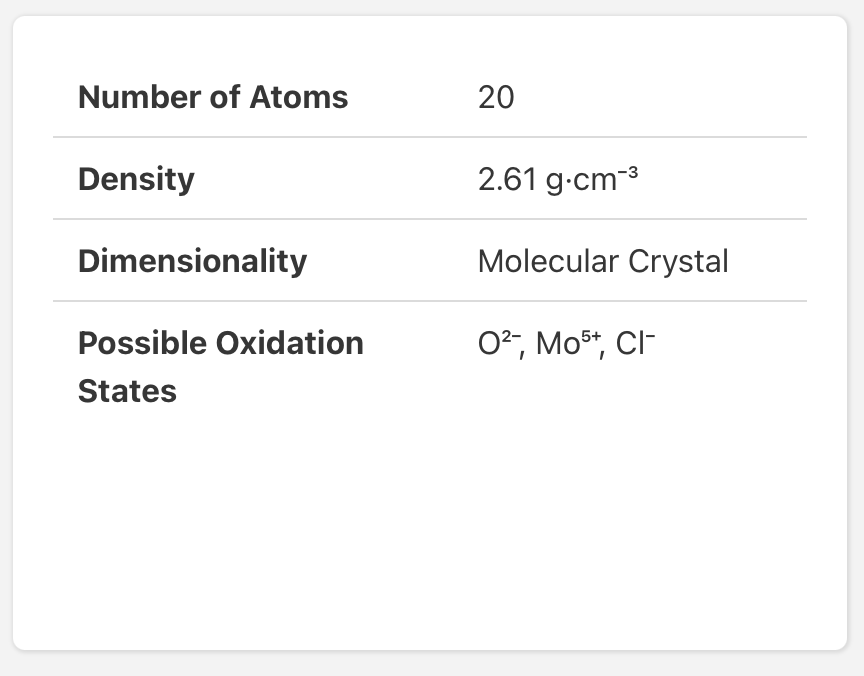Hi,
I’m curious about what zero dimensionality means in materials project.
For instance, https://next-gen.materialsproject.org/materials/mp-1227591?material_ids=mp-1227591#crystal_structure has Dimensionality of ‘What’s zero?’ (is this a bug?)
To me, it looks pretty 3D, although a weird structure.
Does anyone know why this is classified as 0D? (if it is)
Thanks!
A link towards the code used to classify dimensionality would be very helpful 
I assume it’s somewhere in pymatgen.analysis.dimensionality but there’s a few different methods in there.
mp-23528 has dimensionality “Molecular Crystal” which means it can’t be a method which returns int, I think.
The dimensionality comes from the robocrys package (paper link) which automatically generates crystal descriptions based on materials informatics. The actual snippet to get crystal dimensionality looks to be pymatgen.analysis.dimensionality.get_structure_components
Thank you. I’m still not sure what the difference between “What’s zero?” and “molecular crystal” is, but I think it might be to do with the number of atoms in the structure components in the code you sent.
@Thomas_Warford Here’s the code the web server uses to determine the text in the “Dimensionality” field:
robocrys_doc = get_rester().materials.robocrys.search_docs(
material_ids=mpid
)[0]
condensed_structure = robocrys_doc.condensed_structure
dimensionality_map = {
3: "3D",
2: "2D or Layered",
1: "Molecular Crystal",
0: "What's zero?",
}
dimensionality = dimensionality_map[condensed_structure.dimensionality]
HTH
Hey @Thomas_Warford this is a typo/ambiguity in labels on our side; until we can update these, you can interpret “Molecular Crystal” as 1D, and “What’s zero?” as 0D.
0D in this case basically means a structure composed of almost independent formula units. The structure is still 3D bulk-like, and not a cluster. But, the 0D here indicates that there are only weak or no bonds between formula units. A prototype for this would be a vdW-bound solid like Ne. 0D probably encompasses most molecular crystals
1D indicates that stronger bonds are observed only in one direction. The other axes feature weak to no bonding. Think a solid composed of chains which are covalently bound, and then are vdW-bonded to neighboring chains
2D and 3D are a little more intuitive. 2D implies basically a layered structure with vdW bonds between layers. 3D means stronger/denser bonds in all directions.
1 Like
That all makes sense. Thanks everyone

